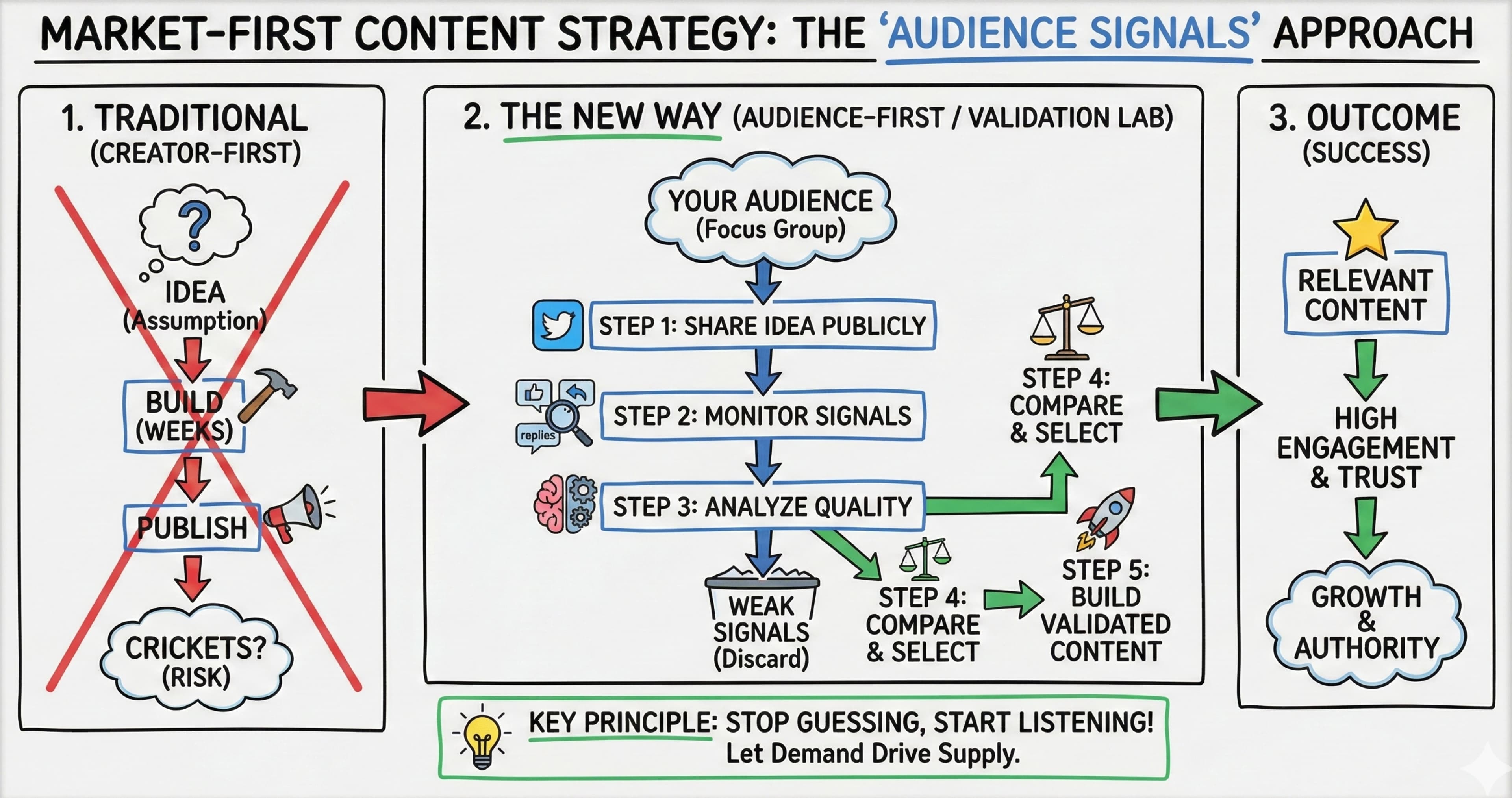Market-First Content Strategies: How Your Audience Signals Drive Successful Content Marketing Strategy
Stop creating content nobody wants. Learn how successful creators use their audience signals to validate content ideas before investing time in creation.
•5 min read
Details
Topic:

Loading content...

